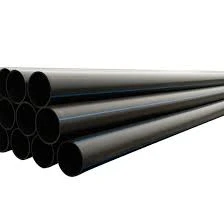Oct . 09, 2024 07:25 Back to list
Tips for Choosing and Using Plastic Pipe Fittings Effectively in Your Plumbing Projects
Understanding Plastic Pipe Fittings A Comprehensive Overview
Plastic pipe fittings are essential components in modern plumbing and piping systems. These fittings, made from various types of plastic such as PVC (Polyvinyl Chloride), CPVC (Chlorinated Polyvinyl Chloride), and PEX (Cross-Linked Polyethylene), offer numerous advantages over traditional materials like metal, making them a popular choice for both residential and commercial applications.
One of the most significant benefits of plastic pipe fittings is their resistance to corrosion. Unlike metal fittings that can rust or degrade when exposed to moisture, plastic fittings remain unaffected by water and chemicals, ensuring a longer lifespan and reduced maintenance costs. This durability is particularly important in industries dealing with corrosive substances, where metal fittings would fail over time.
In addition to corrosion resistance, plastic fittings are also lightweight, making them easier to handle and install. The lighter weight not only simplifies transportation but also reduces the structural load on buildings and piping systems. This can be especially vital in renovation projects where minimizing additional weight is crucial.
plastic pipe fittings

Another advantage of plastic pipe fittings is their versatility
. They come in various shapes, sizes, and configurations, allowing for flexible design options in plumbing systems. Whether you need elbows, tees, couplings, or reducers, plastic fittings can accommodate diverse requirements with ease. Furthermore, they can be connected using different methods, including solvent welding, mechanical fittings, or simple push-fit connections, enhancing installation versatility.Cost-effectiveness is another key factor driving the popularity of plastic pipe fittings. Generally, they are more affordable than their metal counterparts, making them a budget-friendly option for construction and renovation projects. This cost advantage, combined with their durability and lower maintenance requirements, often results in significant savings over time.
However, it’s important to consider the limitations of plastic fittings. They may not be suitable for high-temperature applications or extreme pressure environments, where metal fittings may be necessary. Additionally, certain types of plastic can become brittle over time if exposed to UV light, necessitating UV-resistant alternatives for outdoor installations.
In conclusion, plastic pipe fittings represent a modern solution to plumbing needs, offering durability, lightweight handling, versatility, and cost savings. As technology advances, the range and quality of plastic fittings continue to improve, making them an increasingly viable choice for a variety of applications. Understanding their properties and the appropriate contexts in which to use them ensures that both residential and commercial projects achieve reliable, long-lasting performance.
-
High Transparency PVC Clear Sheet Super Transparency PVC Sheets & HDPE Cutting Board Supplier
NewsJul.04,2025
-
High-Quality PVC-M Pipe Supplier Trusted PVC Pipe Company & 75mm PVC Connection Pipe Solutions
NewsJul.04,2025
-
PVC Transparent Sheet Roll - Durable & Flexible PVC Plastic Sheet Roll for Industrial & Home Use
NewsJun.24,2025
-
High-Quality PVC PPR Pipes and Fittings Durable ERA PPR Solutions
NewsJun.10,2025
-
High-Quality Large HDPE Sheets & Large Diameter PVC Pipe Durable Large PVC Pipe Supplier
NewsJun.10,2025
-
High Density Polyethylene Cutting Board - Durable & Food Safe
NewsJun.09,2025

